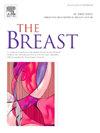保乳手术中边缘状态的术前预测模型
IF 7.9
2区 医学
Q1 OBSTETRICS & GYNECOLOGY
引用次数: 0
摘要
背景与目的保乳手术(BCS)后切缘呈阳性不仅经常需要再次切除,而且是局部复发的最重要危险因素。本研究旨在确定BCS阳性切缘的术前预测因素,并建立预测模型。材料与方法回顾性分析天津医科大学肿瘤研究所2837例原发性乳腺癌(BC)行BCS的患者。2014年6月至2024年6月期间在医院就诊。所有患者均接受术前影像学评估,包括超声检查(US)、乳房x光检查(MG)和磁共振成像(MRI)。患者随机分为训练组(n = 1986,占70%)和验证组(n = 8551,占30%)。在培训队列中使用单变量和多变量逻辑回归来确定重要的临床病理和影像学预测因素。通过计算c指数来评估辨别性,采用Hosmer-Lemeshow拟合优度检验来验证校准性能。结果本组阳性边际率为18.6%。预测模型包含7个变量:组织学类型;MRI参数包括最大病变大小、纤维腺组织(FGT)、背景实质增强(BPE)、非肿块增强(NME)、多灶性和腋窝淋巴结转移(ALNM)。模型组和验证组的c指数分别为0.782 (95% CI: 0.757-0.807)和0.761 (95% CI: 0.719-0.803)。Hosmer-Lemeshow检验:x²= 3.3163,df = 3, p值= 0.3454。结论:我们开发并验证了一种预测BCS阳性切缘风险的术前nomogram,整合了关键的临床病理和影像学参数。本文章由计算机程序翻译,如有差异,请以英文原文为准。
A preoperative predictive model for margin status in breast-conserving surgery
Background and purpose
Positive margins after breast-conserving surgery (BCS) not only frequently necessitate re-excision but also represent the most significant risk factor for local recurrence. This study aimed to identify preoperative predictors of positive margins in BCS and establish a predictive model.
Materials and methods
A retrospective analysis was conducted on 2837 patients with primary breast cancer (BC) who underwent BCS at Tianjin Medical University Cancer Institute & Hospital between June 2014 and June 2024. All patients underwent preoperative imaging evaluations, including ultrasonography (US), mammography (MG), and magnetic resonance imaging (MRI). Patients were randomly divided into a training cohort (n = 1,986, 70 %) and a validation cohort (n = 851, 30 %). A nomogram was developed in the training cohort using univariate and multivariate logistic regression to identify significant clinicopathological and imaging predictors. Discrimination was evaluated by calculating the C-index, while the Hosmer-Lemeshow goodness-of-fit test was applied to validate calibration performance.
Results
The positive margin rate in our cohort was 18.6 %. The predictive model incorporated seven variables: histological type; MRI parameters including maximum lesion size, fibroglandular tissue (FGT), background parenchymal enhancement (BPE), non-mass enhancement (NME), multifocality, and axillary lymph node metastasis (ALNM). C-indices were calculated of 0.782 (95 % CI: 0.757–0.807) and 0.761 (95 % CI: 0.719–0.803) for the modeling and the validation group, respectively. Hosmer-Lemeshow test:X-squared = 3.3163, df = 3, p-value = 0.3454.
Conclusion
We developed and validated a preoperative nomogram for predicting the risk of positive margins in BCS, integrating key clinicopathological and imaging parameters.
求助全文
通过发布文献求助,成功后即可免费获取论文全文。
去求助
来源期刊

Breast
医学-妇产科学
CiteScore
8.70
自引率
2.60%
发文量
165
审稿时长
59 days
期刊介绍:
The Breast is an international, multidisciplinary journal for researchers and clinicians, which focuses on translational and clinical research for the advancement of breast cancer prevention, diagnosis and treatment of all stages.
 求助内容:
求助内容: 应助结果提醒方式:
应助结果提醒方式:


